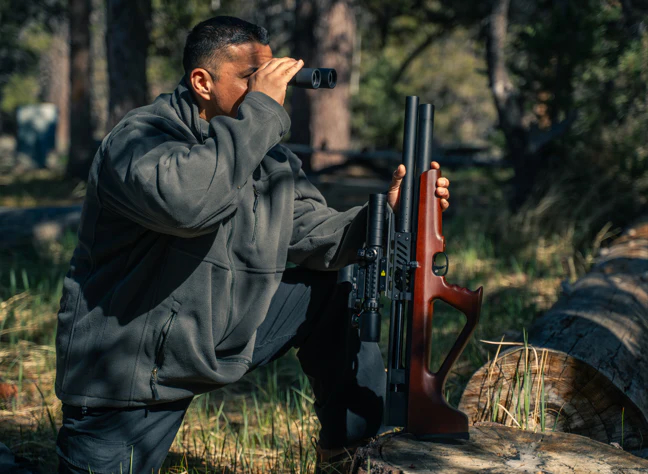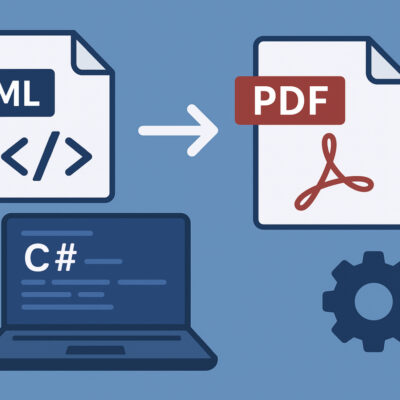
When it comes to hunting in Texas, precision and preparation make all the difference. The Lone Star State’s deer season is one of the most exciting times of the year for hunters, offering vast landscapes, diverse terrain, and abundant whitetail populations. However, success in the field isn’t just about having the right rifle—it’s about equipping it with the best rifle scope for your environment and style. Whether you’re stalking deer in thick brush or taking long-range shots across open fields, choosing the right optic can transform your hunting experience. In this guide, we’ll break down everything you need to know about selecting the best rifle scopes for deer season in Texas, including comparisons like First Focal Plane vs Second Focal Plane, insights on tactical scopes, and how to choose the best focal plane for hunting.
Understanding Texas Deer Season and Its Unique Challenges
Before choosing a scope, it’s important to understand what makes Texas deer season special. Unlike some other states, Texas offers an extended hunting season with diverse regions—from the rolling Hill Country and brushy South Texas plains to the piney woods of East Texas. Each area demands a different approach to visibility, distance, and terrain.
In the Hill Country, hunters might encounter deer at mid-range distances (100 to 300 yards), where clarity and quick target acquisition are key. In South Texas, wide-open ranchlands call for long-range rifle scopes for hunting, capable of precise shots at 400 yards or more. Meanwhile, East Texas hunters deal with dense forests where low-light performance and wide field of view matter most.
Because of these varying conditions, the best scope for Texas hunting season isn’t a one-size-fits-all solution—it depends on where and how you hunt.
Rifle Scope Basics: What to Know Before Buying
Every hunter should understand a few essential features before investing in a rifle scope. Magnification, objective lens size, reticle type, and focal plane placement all influence how effectively you can aim and shoot.
Magnification determines how close your target appears. For Texas deer hunting, variable scopes (like 3–9x or 4–16x) are ideal because they allow flexibility across different ranges. The objective lens affects brightness; larger lenses (40–56mm) gather more light, which is helpful during early mornings or late evenings.
Finally, the focal plane—where the reticle sits inside the scope—plays a crucial role in how your aiming points change with magnification. This is where the First Focal Plane vs Second Focal Plane debate comes in.
First Focal Plane vs Second Focal Plane: Key Differences
When comparing First Focal Plane (FFP) and Second Focal Plane (SFP) rifle scopes, the main difference lies in how the reticle behaves when you zoom in or out.
In an FFP scope, the reticle scales with magnification. If you zoom in, both the target and the reticle grow proportionally, meaning your holdover points remain accurate at all zoom levels. This consistency makes FFP scopes popular among long-range shooters and tactical hunters who rely on precision at varying distances.
In an SFP scope, the reticle stays the same size no matter how much you zoom. While this keeps the reticle more visible at low power (great for close-range or quick shots), it means that your holdovers are only accurate at one specific magnification—usually the highest.
When comparing rifle scope FFP vs SFP scope designs, think about your typical shooting range and environment. If you often take long-range shots across open fields, FFP scopes give you consistent accuracy. But if you hunt in wooded areas or prefer simple aiming, SFP scopes are more practical.
The Best Focal Plane for Hunting in Texas
Choosing the best focal plane for hunting depends on where you’ll be during Texas deer season.
For hunters in West or South Texas, where visibility stretches for hundreds of yards, an FFP scope provides an advantage. These regions demand precision across variable distances, and FFP optics ensure your reticle remains true no matter the magnification.
If you’re in East or Central Texas, where most shots occur within 100–250 yards, an SFP scope is often more suitable. You’ll benefit from a stable, visible reticle that’s easy to use for quick aiming in dense cover.
Ultimately, the choice comes down to your hunting style. The best focal plane for hunting is the one that matches your environment and comfort level with reading reticle markings.
Tactical Scopes vs Traditional Hunting Scopes
Modern hunters are increasingly turning to tactical scopes—optics originally designed for military or precision shooting—because of their adaptability and advanced features.
A tactical scope often includes adjustable turrets for elevation and windage, illuminated reticles, parallax adjustment, and higher magnification ranges. These scopes allow hunters to fine-tune accuracy and adapt to changing conditions, which is especially useful in long-range hunting typical of South and West Texas.
However, for traditional whitetail hunts in brush or forested terrain, a simpler scope—like a 3–9×40 with an SFP reticle—may be ideal. It provides reliability, durability, and a wide field of view without unnecessary complexity.
When comparing a tactical scopes guide to traditional options, consider how often you’ll use advanced features like turret adjustments or ranging reticles. For most deer hunters, a balance of clarity, light transmission, and durability is more valuable than overly technical adjustments.
Top Features to Look for in the Best Rifle Scopes for Texas Deer Hunting
Whether you’re a seasoned marksman or a weekend enthusiast, certain scope features are essential for success in Texas deer season:
- Durability: Texas weather can change quickly. Choose scopes that are waterproof, fog-proof, and shock-resistant.
- Light Transmission: Early morning and dusk are prime hunting times. Opt for multi-coated lenses that perform well in low-light conditions.
- Magnification Range: For open country, 4–16x or 5–25x scopes are perfect. For wooded areas, 3–9x or 2–10x offer better flexibility.
- Reticle Type: BDC (Bullet Drop Compensation) or illuminated reticles help in low light and when estimating holdover distances.
- Eye Relief: Comfortable eye relief prevents recoil injury, especially with powerful rifles like .308 or .30-06 commonly used in Texas.
Long Range Rifle Scopes for Hunting
In South and West Texas, where terrain is flat and open, long-range rifle scopes for hunting can be game-changers. Brands that offer top-tier optics with precise adjustments, like Vortex, Leupold, and Nightforce, are favorites among Texas hunters.
An FFP scope with a magnification range of 4–20x or higher allows you to spot and engage targets accurately beyond 400 yards. Look for models with zero-stop turrets and parallax correction for the best long-range results.
However, don’t forget that practice matters more than magnification. Even the best scope can’t replace understanding your rifle’s ballistics and spending time on the range before deer season opens.
Practical Scope Recommendations
For hunters in East Texas, a Second Focal Plane 3–9×40 with an illuminated duplex reticle is ideal. It’s affordable, reliable, and fast for shorter distances in dense terrain.
In South Texas, a First Focal Plane 4–16×50 tactical scope provides the precision needed for long-range shots and open fields. The scaling reticle ensures accurate holdovers across varying distances.
For Hill Country hunters, a variable 3–15×44 scope strikes a perfect balance—enough magnification for mid-range shots but still light and compact for mobile hunting.
If you want a deer season Texas guide simplified into optics advice: match your scope’s magnification and reticle type to your terrain, not just your rifle.
Rifle Scope FFP vs SFP Comparison in Real-World Texas Scenarios
Let’s look at a few practical comparisons:
- Scenario 1: Long-Range Ranch Hunting (West Texas)
You’re glassing from a ridge and spot a buck 450 yards away. With an FFP scope, you can zoom in, adjust for drop using your reticle markings, and take the shot confidently. - Scenario 2: Dense Forest (East Texas)
You’re walking through thick piney woods and suddenly spot movement at 80 yards. An SFP scope keeps your reticle large and visible, helping you acquire the target instantly. - Scenario 3: Versatile Hill Country Terrain
You hunt both open pastures and wooded patches. A hybrid setup—moderate magnification with an SFP reticle—gives you adaptability without sacrificing simplicity.
Each scenario shows why understanding rifle scope FFP vs SFP scope comparison matters. Texas terrain is unpredictable, so adaptability and clarity often determine success.
Final Thoughts: Finding the Best Scope for Texas Hunting Season
Selecting the best rifle scope for Texas deer season comes down to balancing precision, simplicity, and terrain needs. Texas offers one of the most varied hunting environments in the country, and your optic should match your surroundings.
If you hunt vast, open ranchlands or take long-range shots, invest in a high-quality First Focal Plane tactical scope with reliable magnification and reticle accuracy. If you prefer close- to mid-range hunts in wooded areas, a Second Focal Plane hunting scope delivers dependable performance and quick target acquisition.
The best focal plane for hunting is the one that aligns with your range, experience, and comfort level. Both FFP and SFP scopes have their place in a Texas hunter’s toolkit.
So, as Texas deer season approaches, prepare your rifle, check your zero, and choose the scope that gives you the clearest view of success. With the right optic, every sunrise in the Texas wild offers the promise of another unforgettable shot — one defined by precision, patience, and passion for the hunt.









